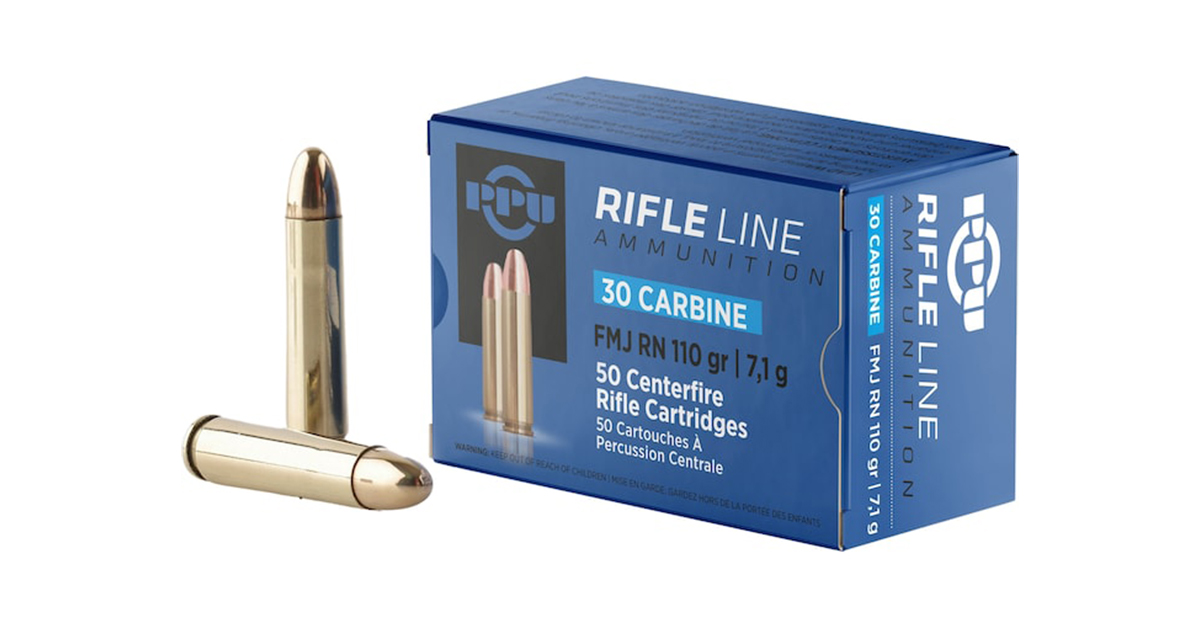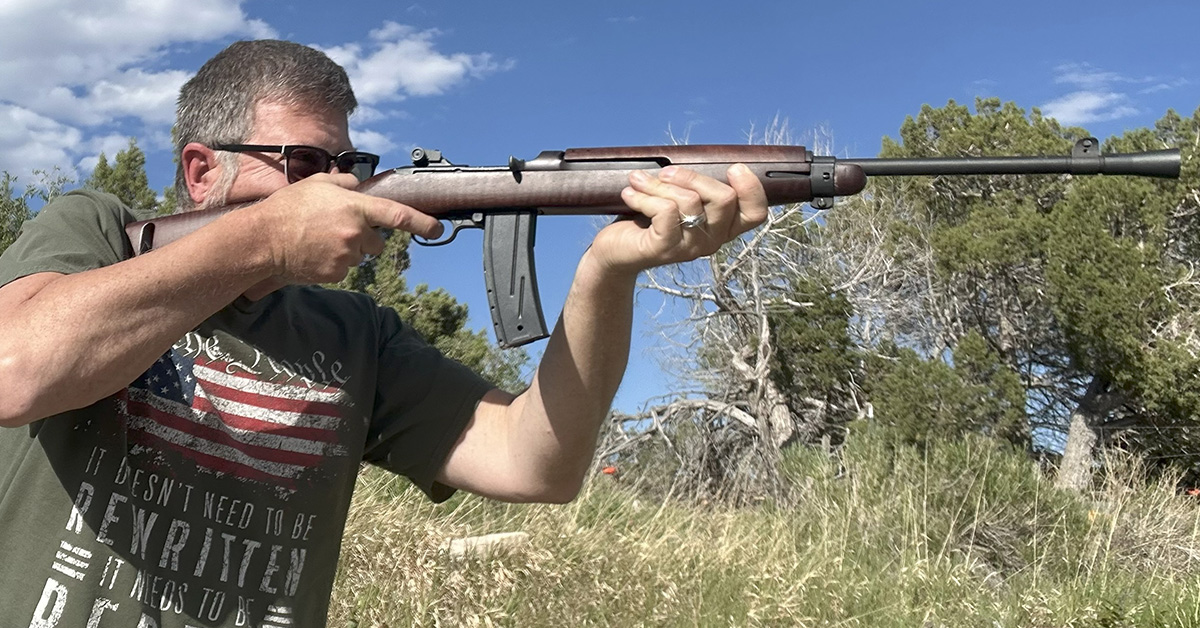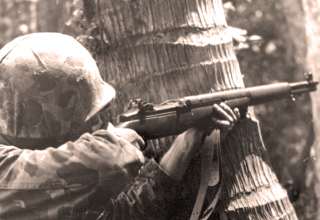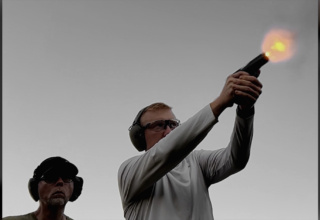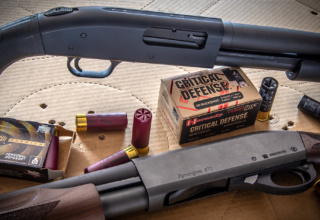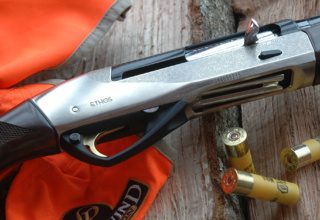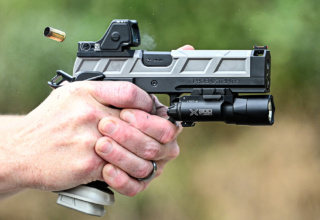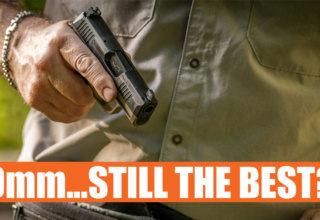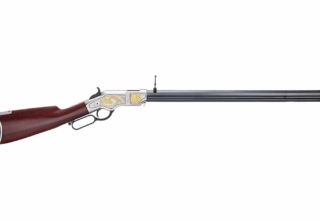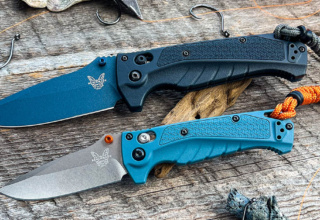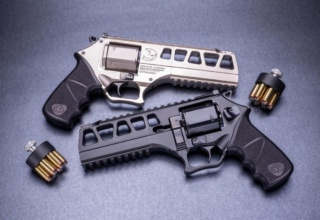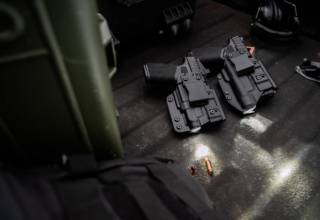This tidy, battle-proven carbine from a bygone era has a potent cool factor, is “shooter-friendly,” and certainly has the grit for homestead protection. Meet, again, the .30 Carbine.
by Paul G Markel
It has been at least four decades since I was a student in a class and the instructor stated, “If you have a question, don’t be afraid to ask it. You are likely not the only one who has that question.” When I later became a professional educator, I embraced that thinking and realized that if one person out of a class of 100 asked a question, it was a safe bet that ten other people were thinking the same thing but didn’t want to raise their hands.
That logic is often applied to the questions that we at Student of the Gun receive via the various messaging forms available today. When we get questions, I generally wonder if the answer would benefit our broad audience. One of these inquiries came in recently: “Do you think the .30 Carbine is still a good choice for home defense?”
Well, if one person took the time to send that question, certainly others are pondering the same thing.
The .30 Carbine in the United States
Rather than retell the story, I asked permission from Nicholas Orr to reprint a section from his book A Pipe Hitters Guide to Small Arms & Weapons. I think you will enjoy his take:
The M1 Carbine is interesting in that it has a similar beginning to the AR-15. Desiring a gun for support and auxiliary troops, the US Army wanted something more than a pistol, but something lighter and more convenient to carry than a full sized fighting rifle, such as the M1903 Springfield or the M1 Garand. So, the .30 caliber M1 Carbine seemed like the “Goldilocks” or “just right” solution.
Using a bolt mechanism that was essentially a scaled down version of the M1 Garand, the M1 Carbine was unique in that it used a detachable magazine and the new .30 Carbine cartridge. This cartridge used a 110 grain full metal jacket bullet that traveled just shy of 2000 feet per second. The .30 Carbine round was flatter shooting than the slow / heavy 230 grain .45 ACP cartridge and the felt recoil was minimal.
As history has shown, the idea of arming only support or auxiliary troops with M1 Carbines soon went out the door as the demand for arms skyrocketed at the height of WWII. It didn’t take long before frontline troops were being deployed with these guns. The original magazines held 15 rounds of ammunition. When the M2 select-fire versions came along, ammo capacity was doubled with the advent of a 30 round magazine. These were given the nickname “jungle clips” by the GIs who used them in the South Pacific campaign.
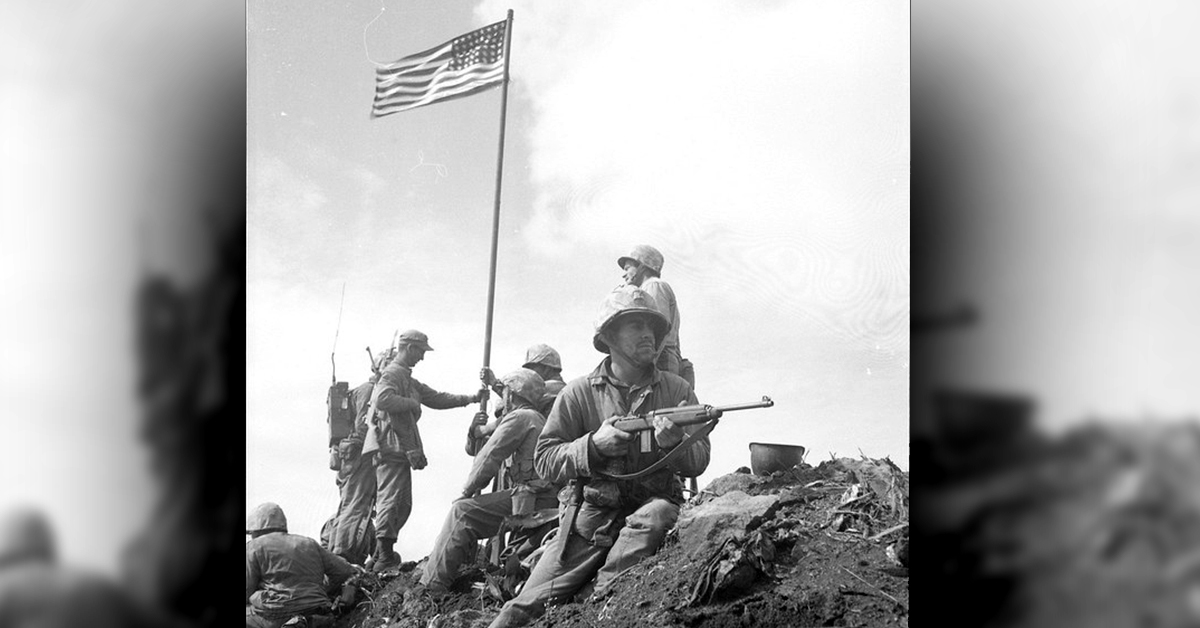
When WWII ended, the United States sold/gave literally hundreds of thousands of M1 Carbines to friendly nations. A good percentage also went into the US military surplus market and were sold in gun shops nationwide. During WWII alone, over 6 million M1 Carbines were manufactured in the semi-automatic M1 variety as well as the full-auto capable M2.
M1 Carbines are still being manufactured today by Auto-Ordnance and Inland Manufacturing. The Universal Firearms Company made a US civilian version of the M1 Carbine that mimicked the original but has some slight variations to the design. The Universal Carbines used the same magazines, ammunition, and a Garand-style action. Although out of business, Universal produced over 420,000 of their carbines.
The M1 Carbine and the variants of that gun saw combat use in Europe, Asia, Africa, and South America.
The .30 Carbine Cartridge
Is the .30 Carbine cartridge a lethal round? While I don’t think the US Army kept specific stats on the number of enemy KIA/WIA from that round, it is safe to calculate that tens of thousands of Germans, Japanese, and then North Koreans fell to the mid-sized round. Yes, I know about the tales from your Great Uncle Jim that the North Korean winter coats stopped the bullets.
To be honest, the .30 Carbine does seem like a pipsqueak of a cartridge when compared to its contemporary, the .30-06; however, I’m guessing not many of you are using a .30-06 as your dedicated home defense gun today.
Modern ammunition makers are producing a variety of loads. I popped over to Midway USA and found factory loads in 110-gr. FMJ as well as several Jacketed Soft Point and specialty expanding loads from Federal Cartridge, Hornady, Remington, and Winchester. Imported ammo from PPU, Sellier & Bellot, and Magtech abound. The 110-gr. bullet weight remains the industry standard. Depending on the load and maker, expect to pay around .50¢ to $1.00 per shot. If you look around and do the research, you can still find .30 Carbine military surplus ammunition sold in OD green ammo cans. You must buy in bulk, but the overall savings is considerable.
New Model M1 .30 Carbines
If you are long in the tooth like me, you will recall going into gun shops in the early 1980s and seeing a wooden barrel full of US military surplus M1 Carbines marked: $99 Your Pick. Brothers and sisters, that ship has sailed and is way over the horizon. Those old WWII guns are now “collector’s items” and if you can find them, they are priced in the multiple thousands of dollars. For this review, let’s look at what is available in the new gun market.
Inland Manufacturing M1 1944
Inland Manufacturing has several different carbine models in their catalog. Let’s consider the basic model, or the one that is called the M1 1944 carbine. According to company literature, “The M1 1944 carbines feature many of the same characteristics of the original Inland Carbines and are manufactured in the USA! The 1944 M1 carbine has the same features as the 1945 M1 carbine but with a Type 2 barrel band and 10-round magazine. This model is made available for sale in most states with magazine and bayonet lug restrictions. Like the 1945 model, the 1944 features adjustable rear sights, push-button safety, round bolt, and “low wood” walnut stock.
- Caliber: .30 Carbine
- Magazine Capacity: 10 rounds
- Barrel Length: 18 in.
- Total Length: 35.75 in.
- Barrel Groove: 4
- Twist Rate: 1:20
- Weight: 5 lb., 3 oz.
- MSRP: $1495
Auto-Ordnance AOM130
Auto-Ordnance is another United States maker of new model .30 Carbines. They have a few models in their catalog as well and the basic version is listed as the AO M130. Again, they describe this gun as follows.
“The Auto-Ordnance M1 .30 Caliber carbine is produced in Kahr’s state-of-the-art manufacturing plant in Greeley, PA. All Auto-Ordnance carbines are produced using newly manufactured parts on high precision computerized machinery.
“Each Auto-Ordnance M1 Carbine is a faithful reproduction of the famous military rifles that served American forces beginning in World War II. Each rifle has a Blued finish, American Walnut stock, 15 round magazine (10 rounds where required by law), 18” barrel, and flip-style rear sight. Our “Paratrooper” model has a folding metal stock, and wood pistol grip. Markings include the following: Auto-Ordnance, Greeley, PA behind the rear sight; U.S. Carbine, Cal. 30 ML on the receiver in front of the bolt; and the serial number is engraved on the left side of the receiver.”
“Paratrooper” Models

If you are looking for something a bit fancier, both Inland Mfg. and Auto-Ordnance offer their “Paratrooper” models with a side-folding stock. They function in the same manner as the basic carbines but have the cool factor of the steel (wire) side-folding stock in the event that you might be jumping into Normandy sometime soon. Yes, you pay a bit more for the cool factor.
Other Models
Scouring online sites like Guns.com and Gunbroker.com, you can find a pretty decent selection of guns chambering the .30 Carbine cartridge. Iver Johnson made some interesting guns, and you can still find the Universal Carbines even though that company is out of business. After all, Universal did produce over 400,000 units, so there are a lot of them floating around.

Speaking of “floating around out there,” I did not get into specifics with our fan who inquired about using a .30 Carbine for home defense, but if I had to venture a guess, I’d say they already have one in hand.
From the end of WWII to about the time of the Clinton Crime Bill, M1 Carbines were cheap and plentiful all over America. Hundreds of thousands of those guns ended up in closets from sea to shining sea. Now, the younger folks are inheriting these “old carbines” from their parents and grandparents.
Home Defense Question
As to the home defense question, the simple answer is “yes.” The more detailed answer is that the .30 Carbine is a solid home defense gun for the very reason that it was adopted by the US Army all those years ago. The Army wanted something that was easier for troops to shoot than the M1911A1 pistol, had low (manageable) recoil, was relatively compact and simple to maneuver in and out of vehicles and in a MOUT (Military Operations on Urban Terrain) situation.
We apply the same process to an M1 .30 Carbine as we would any gun used for self-preservation or home defense. First, we purchase plenty of ammunition for training as well as the ammo we are going to use for mortal combat. We run the gun under realistic training circumstances to ensure that it is reliable. This includes all the magazines we are planning to use.
The two big items to check off: is it reliable with the chosen ammunition AND do you have confidence in your ability to use it under the extreme stress of a life and death situation? Thusly, if you are one of the hundreds of thousands of Americans with .30 Carbine long guns, then I say, “Go for it.” A 110-grain bullet traveling at around 2000 feet per second is nothing to sneeze at and is likely to give as good or better performance than any handgun you might have.

